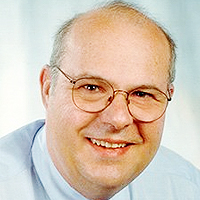Vulvar lipoma: A rare tumour
Published on: 5th May, 2021
OCLC Number/Unique Identifier: 9030351429
A 26 year nulliparous woman presented to the OPD with complaint of painless swelling in the vulva for the last 1.5 years which gradually increased in size causing difficulty in walking.
Autologous grafts in radiotherapy received breast cancer patients
Published on: 9th February, 2018
OCLC Number/Unique Identifier: 7347013999
German surgeon, Vincenz Czerny, transplanted a patient’s own lipoma located in the hip to it’s breast after gland excision due to mastitis in 1895. Dr. Vincenza reported that for at least a year he didnt observe any problem on the operated breast [1]. Injection of adipose tissue to the breast has been used in breast cancer patients during breast reconstruction and lumpectomy. And in cases of revision autologous tissues are used for reconstruction. In clinical practice, many breast cancer patients apply to the clinics mostly after radiotherapy for reconstruction. Rigotti et al used purified autologous lipoaspirates in breast cancer patients with late term complications of radiation therapy and observed increase in neovascularization and wound healing [2]. Panettiere and colleagues compared aesthetic and functional features of fat grafts in radiotherapy received breast cancer patients and control group. In the fat graft group, all clinical symptoms and aesthetic scores were significantly higher than the control group [3].
In plastic surgery especially after the surgical treatment of breast cancer, prosthetic techniques, various autologous flaps or combinations of both are performed for breast reconstruction. Particularly breast reconstructions following adjuvant radiotherapy have less success rates due to adverse effects of radiotherapy [4-10]. There are reports showing reduced complications rates with use of fat grafts before and after breast reconstruction with prosthesis in patients received radiotherapy after lumpectomy or mastectomy.
With that, in patients receiving radiotherapy after fat grafting, local complications such as fat necrosis, infection can be seen more [3,11]. It was reported that adipocytes may had paracrine and endocrine interactions with tumor cells and stromal elements [12]. The fat grafts used in breast cancer were thought to cause local recurrence, distant metastasis or development of new cancers; there was no relationship in the clinical series. There is aromatase activity in the adipose tissue. Thus, fat tissue is the main source of post-menopausal estrogen hormone. Tumor cells and surrounding tissue were found to be higher in aromatase activity. Therefore, when fat tissue is injected subcutaneous or under the gland rather than into the parenchyma local recurrence risk is low [2].
When fat tissue is injected to breast, a good physical examination and mammography should be performed. After fat injection, sometimes calcifications are formed as a result of undergoing necrosis and they interfere with malignancy. Therefore before and after the procedure, mammography must be taken for comparison and existing and or newly developed calcifications should be determined.
Anatomical Distribution of Intramuscular Lipomas
Published on: 19th April, 2017
OCLC Number/Unique Identifier: 7286426158
Lipomas are the most common type of soft tissue tumor occurring in the subcutaneous tissue. Rarely, lipomas present in the deep soft tissue such as intermuscular, intramuscular, and parosteal sites. When they occur within a skeletal muscle they are called intramuscular lipomas. Intramuscular lipomas may involve both children and adults. They are benign, nontender, deep located, circumscribed but unencapsulated lesions. Intramuscular lipomas account less than 1% of all lipomas. Most are located within a single muscle (solitary), while cases involving two or more muscles are very rare. They present with typical histological features. They may be divided into the infiltrative, the well-circumscribed and the mixed type. Differential diagnosis of the infiltrative type from liposarcoma is very difficult. Local recurrence may be evident if the surgical margin is not clear. They can occur in almost any anatomical site [1-15].
Giant Lipoma Anterior Neck: A case report
Published on: 14th December, 2017
OCLC Number/Unique Identifier: 8465495935
Lipoma is a benign mesenchymal tumor with a thirteen percent incidence in head and neck region. Posterior triangle is the most common location while anterior neck lipoma is a rare one. Giant lipomas >10cm have been reported in different parts of the body but rarely in the anterior neck. Giant lipomas of the neck can present as a cosmetic disfigurement or can produce pressure symptoms. Most lipomas do not pose any difficulty in diagnosis. Surgical excision remains the treatment of choice. We here present a case of giant anterior neck lipoma.
The blubbery protrusions: Lipoma arborescens
Published on: 15th December, 2020
OCLC Number/Unique Identifier: 8870468711
Preface
Lipoma arborescens is an exceptional condition comprised of frond-like excrescences of mature adipose tissue. The condition was originally described by Albert Hoffa in 1904 with characteristic morphology of macroscopic, villous, frond- like excrescences recapitulating a tree-like appearance, as denominated by the term “arborescens” [1]. Lipoma arborescens is additionally designated as “diffuse articular lipomatosis”, “villous lipomatous proliferation of synovial membrane” or “diffuse lipoma of joint”. The essentially benign condition appears within large joints and typically exhibits adipose tissue infiltration of sub-synovial connective tissue. Synovial sheaths of tendons are infrequently incriminated [1,2].
Incidental discovery of a pancreatic lipoma: a case report
Published on: 24th May, 2022
Pancreatic lipoma is a benign, mesenchymal-derived tumor. It is an uncommon entity that is rarely reported. The diagnosis is usually made on a CT scan or MRI. We present a case of a pancreatic lipoma incidentally discovered on imaging in a 53-years old patient presenting for acute cholecystitis.
Pomaded and unctuous- spindle cell lipoma
Published on: 17th March, 2023
Spindle cell lipoma and pleomorphic lipoma emerge as benign, adipocytic neoplasms representing a morphologic continuum of a singular neoplasm. In addition to myofibroblastoma and cellular angiofibroma, spindle cell lipoma or pleomorphic lipoma configures as a constituent of chromosome 13q/RB1 family of tumors. Initially scripted by Enzinger and Harvey in 1975 with an obsolete terminology of dendritic fibromyxolipoma, aforesaid adipocytic neoplasms articulate an estimated 1.5% of lipomatous tumors. In contrast to conventional lipoma, spindle cell lipoma or pleomorphic lipoma is an uncommonly discerned variant, demonstrating a proportion of 1: 60.
Osseous Choristoma with in a Dermolipoma: 17 Years Old Girl Case Report
Published on: 26th December, 2023
Bone choristoma within a dermolipoma is a rare epibulbar tumor with a low prevalence. It is a benign tumor that does not usually cause discomfort or functional problems to patients who suffer from it. Its treatment is surgical and with an aesthetic purpose.We report the case of a 17-year-old patient with a bone choristoma, a tooth, within a dermolipoma.Epibulbar bone choristoma is a rare benign tumor that causes little discomfort to patients who suffer from it and is asymptomatic in most cases. Computed tomography (CT) is essential in its diagnosis and its treatment is surgical, but always due to aesthetic reasons.
A Life-threatening Case of Giant Bilateral Renal Angiomyolipoma: A Case Report
Published on: 18th June, 2024
Renal angiomyolipoma (AML) is a rare tumor with an incidence of 0.3% - 3%.We reported a case of a 41-year-old male patient who presented with gross hematuria and hemorrhagic shock, due to a right giant angiomyolipoma he underwent urgent right nephrectomy by subcostal laparotomy, total weight of the mass was 6 Kg, histological examination concluded in a renal angiomyolipoma.Treatment of renal AML depends on the clinical presentation, tumor size, and single or multiple lesions: single small (< 4 cm) asymptomatic lesions require only clinical and radiological follow-up, however giant symptomatic (hematuria), life-threatening masses require urgent multidisciplinary treatment and especially surgery.Giant renal bilateral AML is very rare, conservative treatment in the absence of hemorrhage should always be first proposed to preserve renal function as possible.
Hepatic Angiomyolipoma Mimicking Hepatocellular Carcinoma: Another Rare Case Report
Published on: 11th February, 2025
Epithelioid angiomyolipomas (AML) are uncommon mesenchymal neoplasms, belonging to the group of perivascular epithelioid cell neoplasms (PECOMA). Hepatic PECOMA is even rarer. It’s difficult to diagnose in preoperative by imaging, especially when the fatty component is scant or absent. The gold standard for the diagnosis is histologic examination coupled with an immunohistochemical study. Positive HMB45 immunostaining of the myoid cells is a major diagnostic feature. Herein, we report a particular case of hepatic angiomyolipoma in a middle-aged woman with no significant medical past history. The preoperative diagnosis was difficult given the absence of specific clinical manifestations, even the radiologists considered high suspicion of hepatocellular carcinoma. The final diagnosis has been made by post-operative histology coupled with an immunohistochemistry study.
















